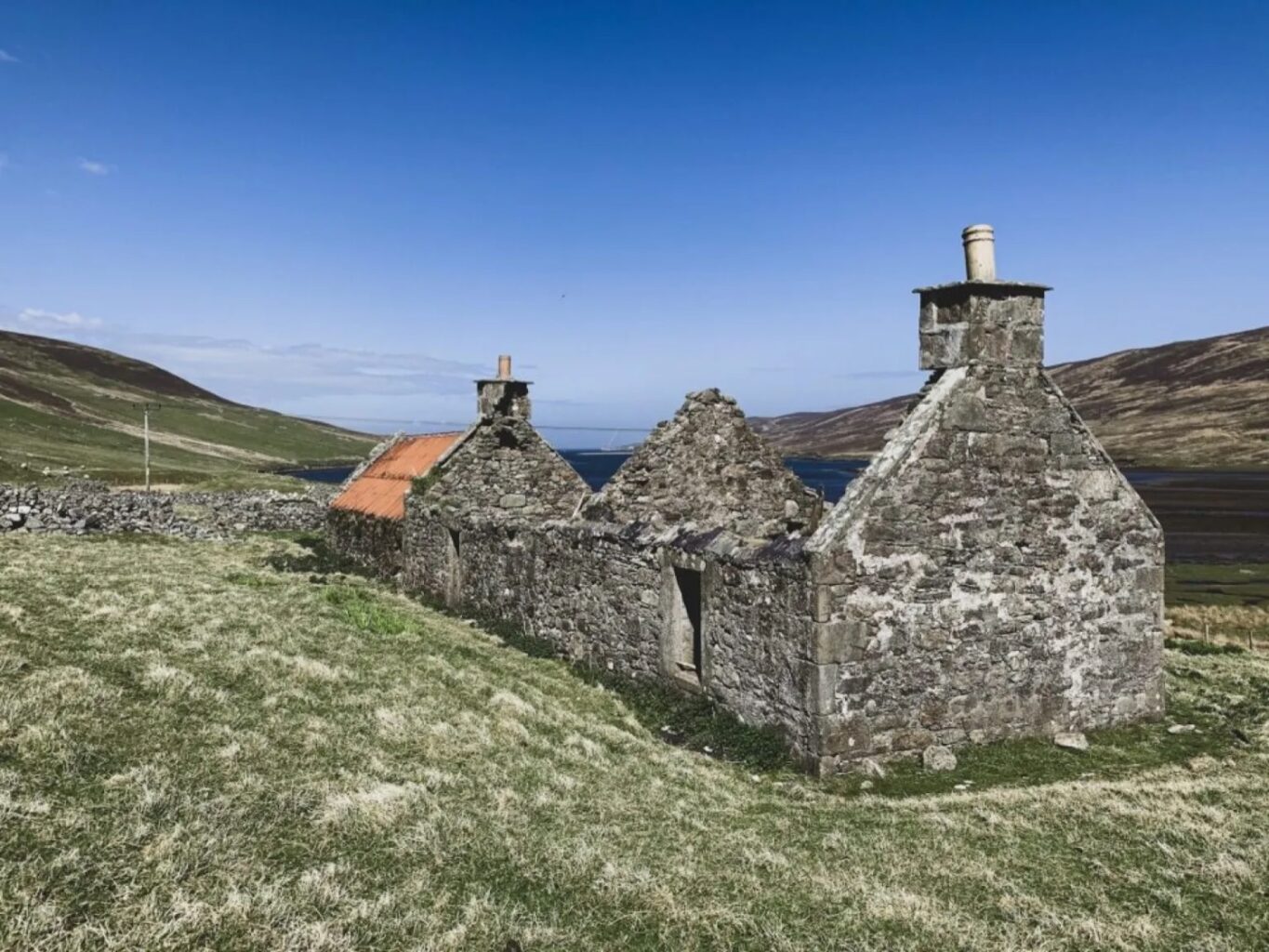
Explore the rich history of Shetland’s croft houses scattered across the islands – from their rustic charm to modern transformations. Witness the legacy of changing times and landscapes.
Visitors that travel to the Shetland Islands cannot fail to notice the many croft houses scattered all over the islands. The landscape is still dotted with these small, usually single storey buildings set into, rather than on, the landscape.
Many remain well tended to and have been upgraded and extended to meet the needs of modern living. You will also see many ruinous and decaying examples, particularly in remote areas.
These small houses were the predominant housing type in the islands at a time when crofting was the main land based economic activity. As the economy changed the crofting way of life in remote areas with poorer land, became unsustainable and many remote croft houses were abandoned as people emigrated to find a new life or moved into Lerwick to find work.

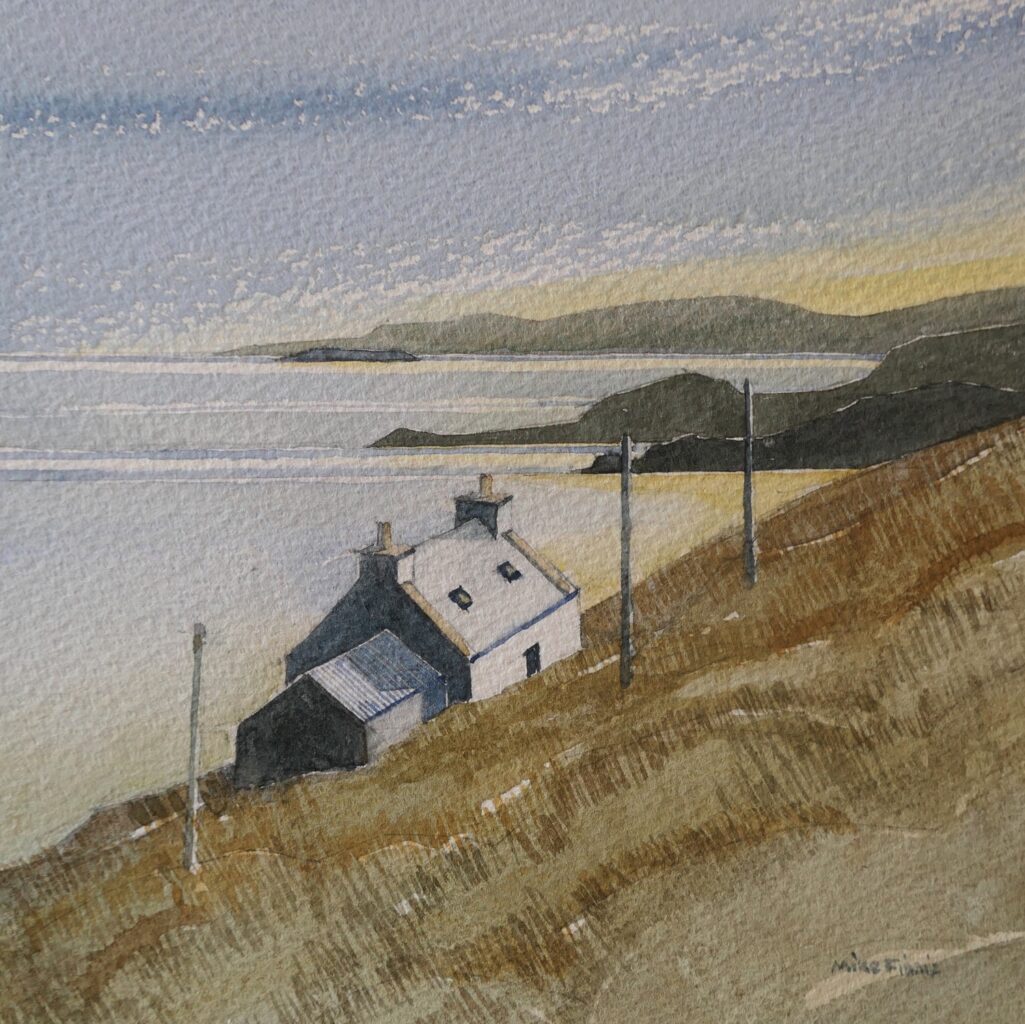

The earliest structures in Shetland were built from stone and used scarce timber in their roof structures, stone corbelling allowed these roofs to need the minimum of wood. When the Norse arrived from the east, they brought their own building traditions which used their predominant material– wood. But there would have been limits to the quantities of wood which could be shipped across the North Sea to the new settlements in Shetland. The Norse houses were built with thick stone walls which sheltered the timber structure inside. You can see a reconstructed Norse house at Haroldswick in Unst.
The quality of the house depended on the quality of the land and availability of building materials. The beautifully restored croft house museum in Shetland’s South Mainland is an example of a house on the good quality agricultural land in that area.
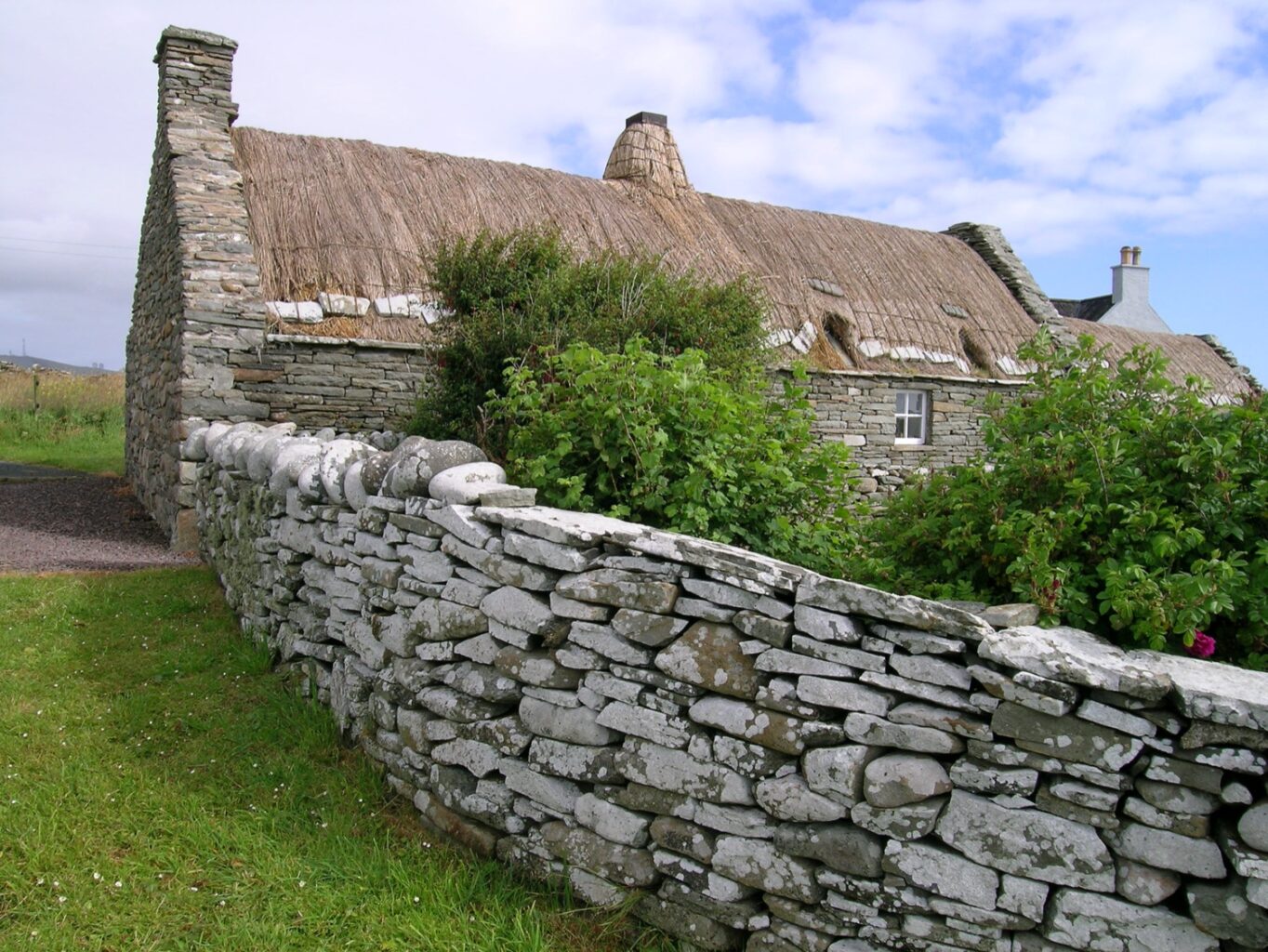
Periodic economic opportunities allowed improvements to be made to houses as people became less dependent on crofting for a meagre income. Men returned from working on whaling ships, from offshore fishing in bigger boats and from the merchant navy with money in their pockets enabling them to improve their houses or even build new.
Wall heads were often heightened to accommodate attic rooms, usually with skylights rather than dormers, and the interiors walls were lined and there were wooden floors rather than beaten earth.
As shipping from Scotland became regular and Shetland became more prosperous, things slowly improved. Buildings materials were shipped into Shetland: wood, tar, felt and corrugated iron. If you could afford it these materials were convenient and saved the constant renewing of thatch. One of the attractive features of many a croft house is the porches. These often have attractive window arrangements carefully designed to give a bit more space and importantly to reduce draughts in the house. There are some beautiful porches, particularly in Unst.
The boom in the 1970s when oil was discovered in the North Sea brought prosperity to Shetland. Some people were then able to improve their houses or move to new homes nearer to their workplaces. Often the old houses were used as outbuildings or left to decay. Sometimes people just left their old houses with the contents inside and moved to the new house with all its modern conveniences.
When you travel to the Shetland islands, take note of these historic croft houses
You can see examples of the different croft houses all over Shetland. Some remained small but might have had the roof heightened with skylights or dormer windows added. Others were extended with a wing to the rear or to one side.
New buildings were built to house the livestock, separate from rather than adjoining the house. It’s possible to restore and repair old croft houses and give them a new life. The houses were small and generally need to be increased in size if they are to house a modern family. There are some good recent examples of careful and considered designs which retain the character of the old property while providing functional spaces and modern conveniences inside.
This abandoned croft house at Dales Voe, holds a very special place in my heart. I’ve always loved this place. I am always fascinated by the ornate and slightly out of proportion porch.
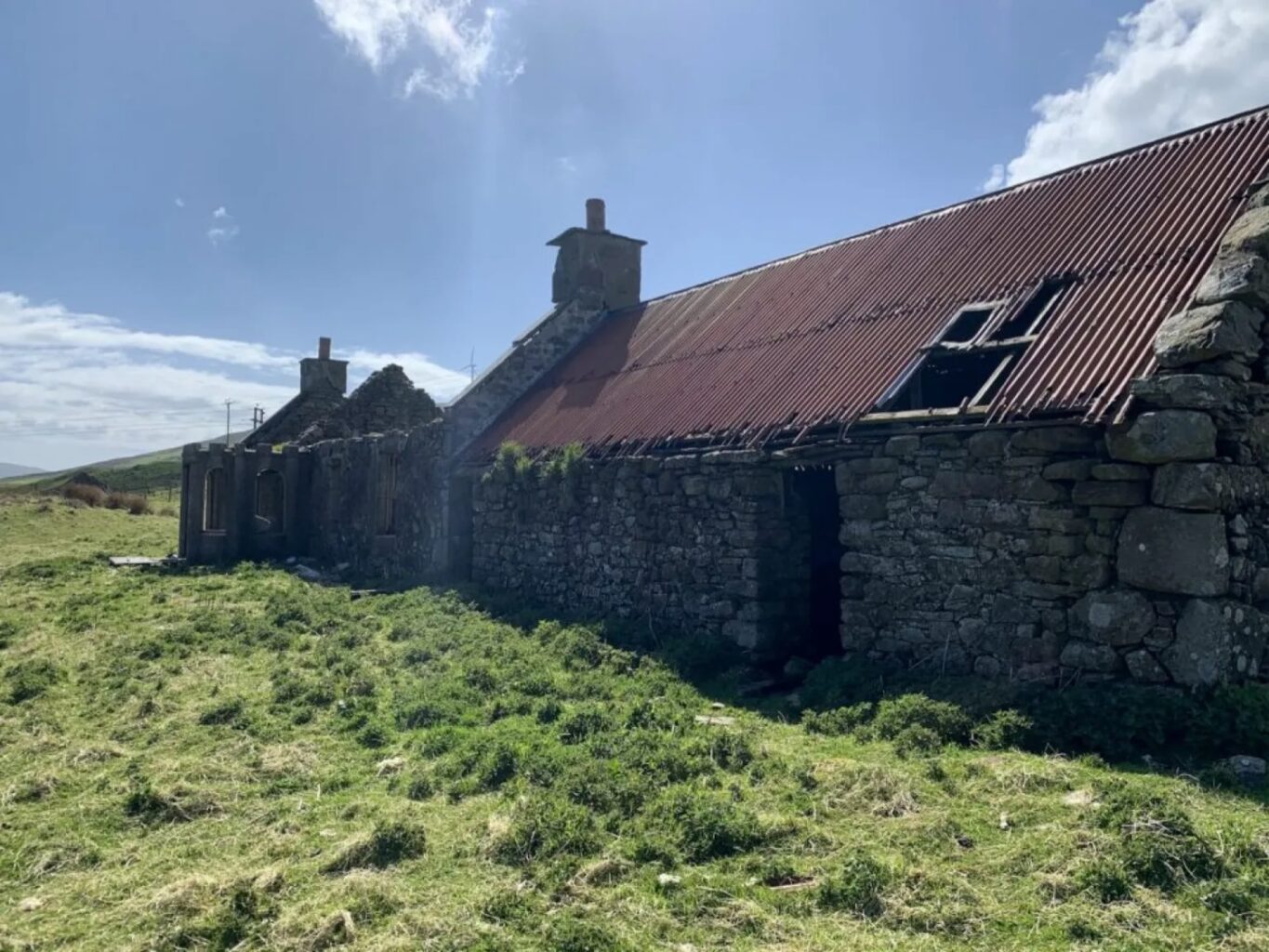
Take a little bit of Shetland with you
The beautiful paintings featured in this post are from Mike Finnie (Red Houss Shetland) – a local artist’s studio on the island of East Burra in Shetland.
When travelling to the Shetland Islands, you might want to take a little souvenir home with you to remember your travel adventure. Mike has a beautiful collection of watercolour paintings, fine art prints and silver jewellery inspired by Shetland (which would make the perfect memento to remember your trip to the Shetland Islands).
If you are dreaming of travelling to Shetland – purchase your copy of the Shetland Wool Adventures Journals.
In these journals you will discover secret Shetland Island hiking trails, beautiful Shetland Island photography and more about this unique Scottish travel destination.
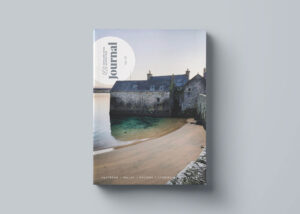


Be The First To Comment